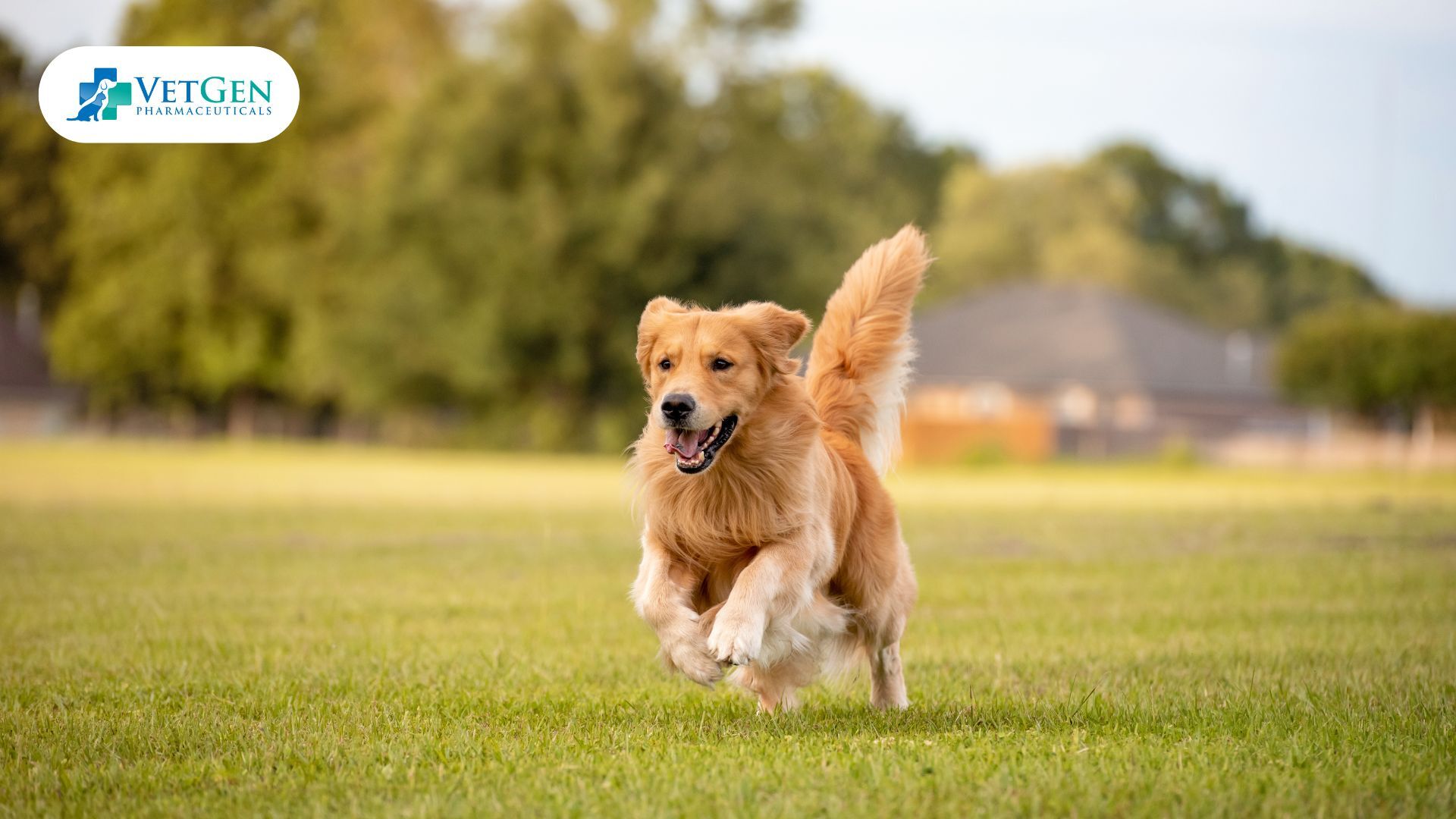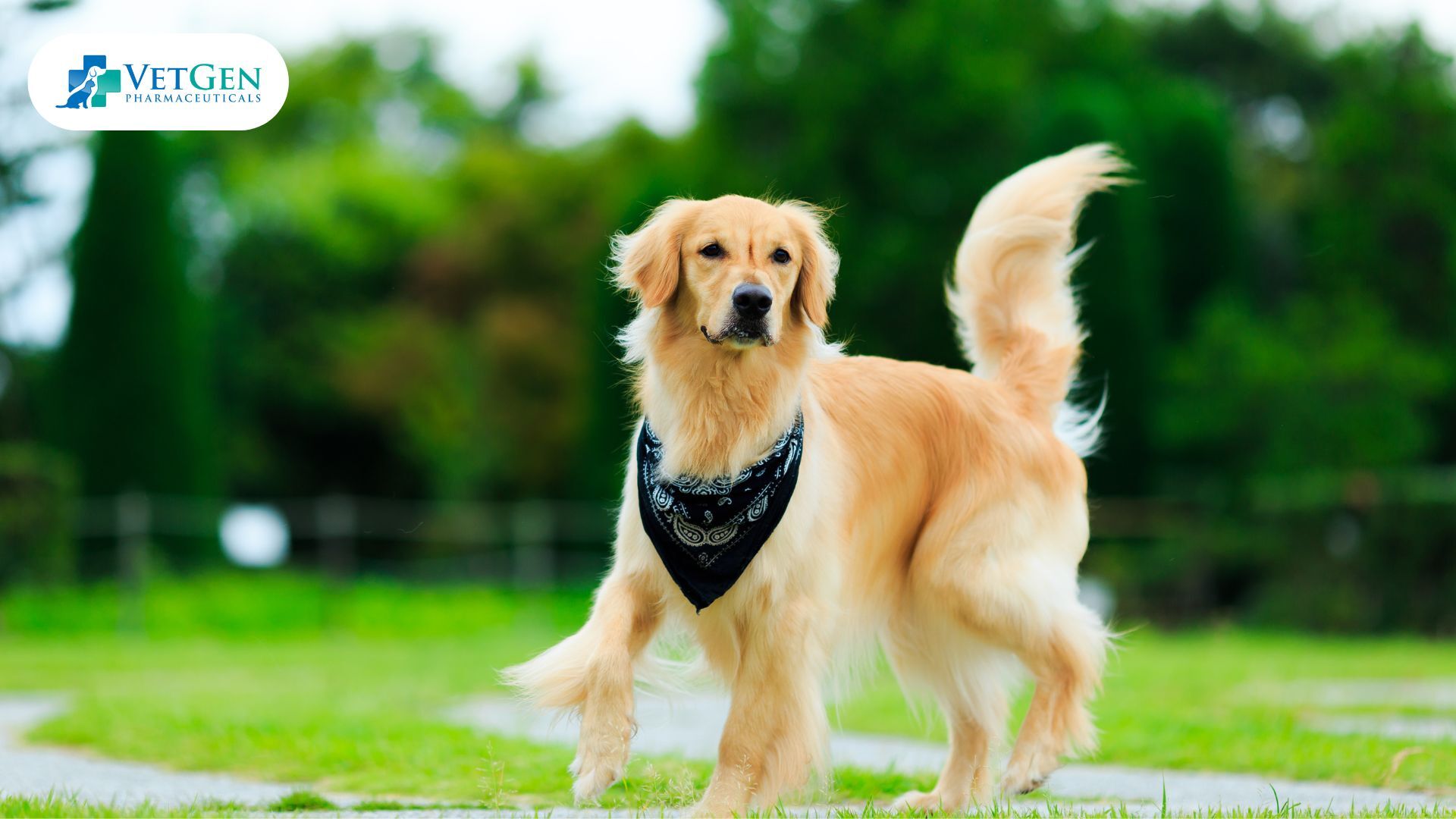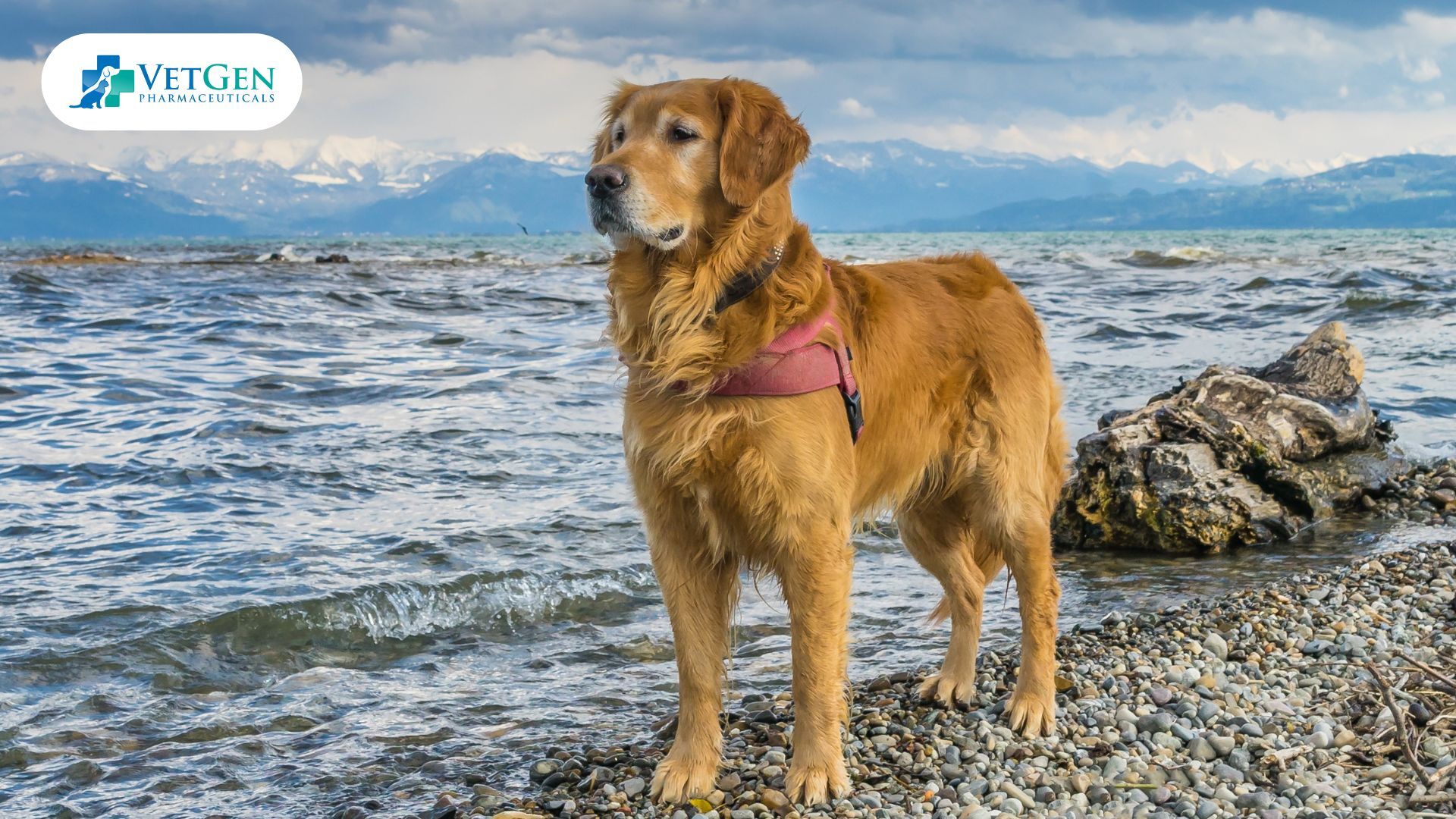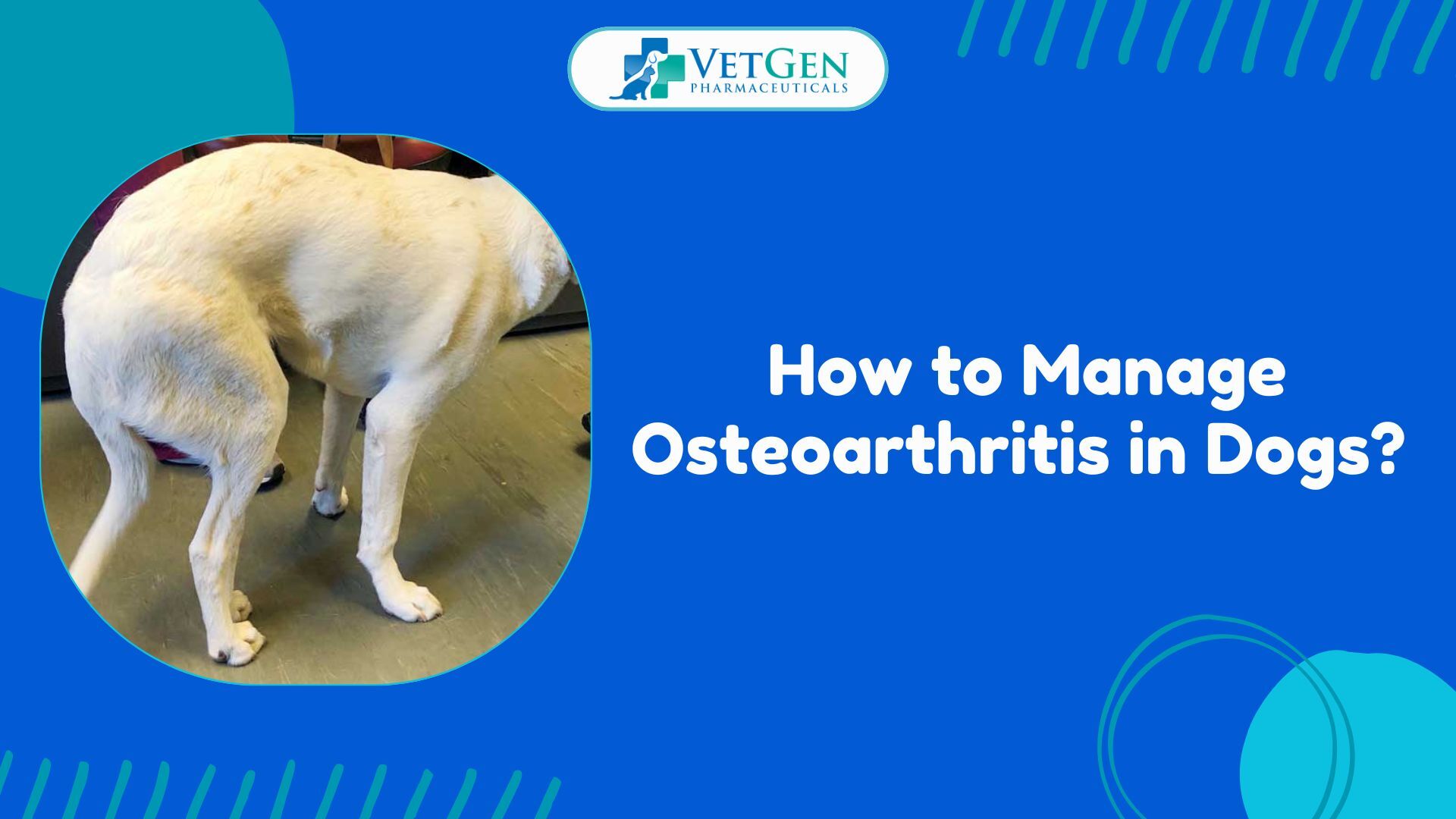Who doesn’t love a Golden Retriever? Being one of the most favorite dog breeds in America, Golden Retrievers are known for their smiling faces, exuberant nature, vigorously wagging tails, and of course, their long golden hair!
The American Kennel Club has even ranked Golden Retrievers as the fourth most popular and loved dog breeds in the United States. In this article, we will learn about the six major types of Golden Retrievers commonly adopted today.
The 6 Types of Golden Retrievers You Should Know
Golden Retrievers are the most popular dog breeds in the US and can be identified by their unique physical traits of a straight muzzle and a broad head. They are categorized into six types based on their geographic location and their magnificent spectrum of coats.
So, here are the most popular types of Golden Retrievers pet owners can consider adopting in modern times.
1. Field-Bred Golden Retrievers
Field-bred Golden Retrievers are highly motivated and energetic working dogs, who are thrilled to participate in varying sporting activities, such as hunting. Their coats may range from short to mid-length, and their colors may vary from dark golden to red. Field-bred Goldens usually have a smaller build and stature than other breed variations.
These Golden Retrievers remind us of the standard Goldens we used to see in the movies and photographs of 1800s Scotland. They are an excellent choice for families or individuals who like to spend quality time outdoors with their family members and pets. These Golden Retrievers are excited to accompany you in fishing or hunting activities and enjoy any kind of outdoor and water sports. So, if you like spending most of your time indoors, the Field-bred Golden Retrievers are not for you as you won’t be able to provide them with their required amounts of daily exercise.

2. Show Golden Retrievers
Show Golden Retrievers, as the name suggests, are rather a style of retrievers that are bred to meet certain breed specifications as per the criteria required in dog shows and competitions. They reflect a perfect image of Golden Retrievers with rich golden coats and long hair. They have an attractive appearance, with a broader and wider head and a thick and large-boned stature.
In short, Show Golden Retrievers have all the wonderful characteristics that a Golden Retriever owner would hope for. Besides the physical attributes, these Goldens are well-natured, friendly, intelligent, and active – the specifications worth showcasing in dog competitions.

3. English Cream Golden Retrievers
English Cream Golden Retrievers, also known as British Golden Retrievers or White Golden Retrievers, are considered one of the rarest types mostly because of their off-white or cream-colored coats. Considering their breeding place, it makes sense that they have long, feathery, and lighter coats and a sturdy build.
The average height of British Golden adult males may vary between 22 and 24 inches, whereas adult females may be about 20–23 inches tall. Besides, the average male adult may weigh around 55–70 pounds, while female adults may weigh around 45–70 pounds. They also tend to have thicker coats and blocky heads and are slightly more expensive because of their high-quality breeders.
There’s a lot of myth around the English Cream Goldens, such as they have better temperaments than other variants. However, a dog’s temperament really depends on its pedigree, how well it is bred, and the health of the environment it is being raised in. The temperament of the dog’s parents and other caregivers matters the most.
Dog owners must socialize their Goldens appropriately to help them grow as self-confident and amicable adults. With proper training, the British Goldens can be extremely friendly and devoted. Similarly, it is also crucial to choose a good dog breeder and perform the necessary genetics testing.

4. Red Golden Retrievers
Red Golden Retrievers are considered to be the red variations of Field-bred Goldens. As obvious, they got their name from their deep and bright red coats, which makes them stand out from other Golden Retrievers. The Red Goldens have longer and thinner hair, and they are comparatively smaller.
The adult females are 21-22.5 inches tall, while the adult males are 22–23 inches tall. Furthermore, the adult female Red Golden Retrievers may weigh about 55-65 pounds and adult males may have a body weight of 65–75 pounds.
Being a variant of the Field-bred Goldens, the Red Golden Retrievers have high energy levels and are highly motivated to work. Many owners feel Red Golden Retrievers are a bit mouthy as they tend to grab objects in their mouth, even the owner’s hands.

5. American Golden Retrievers
American Goldens are probably the most familiar faces as we have seen them in many Hollywood movies and in our locality. Therefore, it is considered the general standard of Golden Retrievers and is more popularly known for its rich golden coat color. Although the golden hues might vary, the coats of American Golden Retrievers are neither too light nor too dark.
Coming to the physical attributes of American Goldens, the adult females are 21.5-22.5 inches tall, whereas the adult males are about 23–24 inches tall. Furthermore, adult females weigh about 55–65 pounds, while adult males weigh slightly higher at 65–75 pounds.
The American Golden Retrievers have dense, skin-hugging coats that are neither silky nor coarse. Also, they have thicker and heavier feathers on the neck, tail, and thighs.
The American Goldens Retrievers are highly intelligent and are easily trainable. They have a friendly, loyal, and compassionate nature and are always eager to please their caregivers and friends. They become excellent companions to children and young couples who love spending quality time with each other and engage in fun and playful outdoor activities.
Therefore, the American Golden Retrievers stand out among other retriever breeds for their high energy and enthusiasm.

6. Canadian Golden Retrievers
Unlike other types of Goldens, the coats of Canadian Goldens are usually thinner and shorter. These are nearly similar to the American types, with a few variations in characteristic traits. The Canadians have a long coat with a slightly different golden shade than the Americans.
However, both American and Canadian Golden Retrievers weigh the same and share the same height. In short, Canadian and American Golden Retrievers are the same dogs from two varying locations.

Closing Words
Golden Retrievers can create beautiful moments together, especially with such super-energetic and exuberant dog breeds. Conduct some research to learn about the features and characteristics of different types of Golden Retrievers and make the best adoption decisions. You can visit VetGen Pharmaceuticals for more information on different dog breeds and their health needs.





